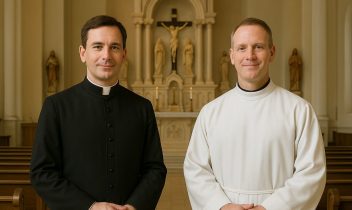No products in the cart.
Return To Shop
Church Role in Promoting Diversity and Inclusion
Once upon a time, the Church stood at the center of every town, its towering steeple a symbol of unity and faith. But as communities grew and diversified, the Church found itself at a crossroads. How could it remain a sanctuary for all while embracing the colours of cultures, beliefs, and experiences within its walls? This question has shaped the evolution of the Church and continues to define its mission today. From historical milestones to modern success stories, let’s explore how the Church embraces diversity and fosters inclusivity, building bridges that connect people across differences.
The Church’s Historical Journey Toward Diversity
The story of diversity in the Church is as old as Christianity itself. Early Christian communities were mosaics of cultures Jews and Gentiles, Greeks and Romans brought together by a shared belief. The Apostle Paul’s letter to the Galatians captures this beautifully:
“There is neither Jew nor Gentile, slave nor free, male nor female, for you are all one in Christ Jesus.” (Galatians 3:28)
Yet, the path to inclusivity hasn’t always been smooth. During the Reformation, the Church splintered along theological and cultural lines. Centuries later, missionaries traveling to distant lands faced the challenge of respecting indigenous traditions while spreading the gospel. Today, churches continue to grapple with these tensions, but with a renewed commitment to honoring every person’s unique identity.
What Does Diversity in the Church Mean?
Diversity in the Church isn’t just about counting heads or showcasing different ethnicities in a congregation. It’s about creating a space where everyone feels valued, regardless of their background, gender, race, or socioeconomic status.
Take St. Mary’s Church in Chicago, where parishioners from over 50 nationalities come together each week. They celebrate Mass in multiple languages and host cultural nights that allow members to share their heritage. This vibrant tapestry exemplifies diversity in action.
The Role of Cultural Diversity in the Church
Imagine a choir where each voice sings the same note—it might sound harmonious, but it lacks the richness of a full symphony. Cultural diversity in the Church adds depth to worship and fellowship.
Benefits of Cultural Diversity:
- Enhanced Worship Experiences: Traditional hymns blend with gospel melodies and modern praise songs, creating a dynamic worship atmosphere.
- Broader Perspectives: Different cultural lenses enrich Bible studies and community discussions.
- Stronger Bonds: Shared meals, festivals, and traditions help build connections across cultures.
But achieving cultural diversity requires intentional effort, as highlighted in the next section.
Breaking Barriers to Cultural Diversity
While diversity enriches the Church, it also challenges us to confront biases and prejudices. Some common barriers include:
- Language Gaps: Multilingual services can be difficult to coordinate but are vital for inclusivity.
- Social Divides: Economic disparities may unintentionally segregate congregations.
- Resistance to Change: Longstanding traditions may clash with new cultural practices.
Churches like Grace Fellowship in New York have tackled these challenges head-on. By hiring bilingual staff, establishing a multicultural leadership team, and hosting listening sessions, they’ve turned barriers into stepping stones.
Why Is Diversity and Inclusion in the Church Important?
At its core, the mission of the Church is to reflect God’s love for all humanity. A diverse and inclusive Church:
- Builds Community: It fosters unity without erasing individuality.
- Demonstrates God’s Kingdom: Diversity mirrors the vision of heaven described in Revelation 7:9 “a great multitude from every nation, tribe, people, and language.”
- Inspires Social Change: Inclusive churches often become leaders in advocating for justice and equality.
Success Stories of Inclusive Churches
- A Tale from California: Holy Trinity Church in Los Angeles was once a small, homogenous parish. Five years ago, they launched an initiative called “Open Doors,” inviting immigrants and refugees to join their community. Today, their congregation speaks over 10 languages, and their annual international potluck has become a beloved tradition.
Challenges Churches Face in Achieving Diversity
Despite progress, the journey toward inclusivity is far from over. Churches may encounter:
- Generational Gaps: Younger members often champion diversity, while older ones may prefer tradition.
- Misunderstandings: Cultural differences can sometimes lead to conflicts.
- Resource Limitations: Smaller churches may lack the funds to implement diversity initiatives.
The key is perseverance and prayer, coupled with practical steps like training staff in cultural sensitivity and fostering open dialogue.
A Vision for the Future
The future of diversity and inclusion in the Church is bright, but it requires commitment from leaders and congregants alike. Imagine churches where everyone feels a sense of belonging, where worship reflects the beauty of every culture, and where love triumphs over division.
Conclusion
The Church’s embrace of diversity and inclusivity is more than a mission; it’s a testament to its faith in action. From breaking down barriers to celebrating cultural differences, the journey is ongoing but it’s one worth taking.
Let’s strive to create churches that are not just places of worship but also sanctuaries of acceptance and love.
Looking for clergy attire that reflects your unique identity and calling? Visit Holy Clergy, your trusted source for high-quality clergy garments.
Frequently Asked Questions (FAQs)
What is diversity in the Church?
Diversity in the Church refers to the inclusion of people from various backgrounds, cultures, and walks of life within a faith community.
Why is cultural diversity important in the Church?
Cultural diversity enriches worship, broadens perspectives, and strengthens community bonds, reflecting God’s love for all humanity.
What challenges do churches face in achieving diversity?
Common challenges include language barriers, social divides, and resistance to change. Overcoming these requires intentional efforts and open dialogue.
How can a church promote inclusivity?
Churches can promote inclusivity by creating multicultural leadership teams, offering multilingual services, and fostering cultural sensitivity through training and events.
What is the biblical basis for diversity in the Church?
Scriptures like Galatians 3:28 and Revelation 7:9 emphasize unity in Christ and the vision of a diverse heavenly kingdom.








Recent Comments